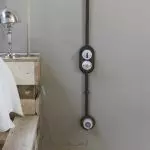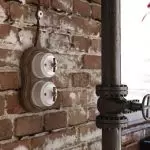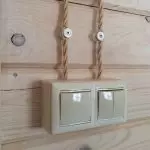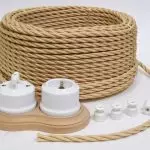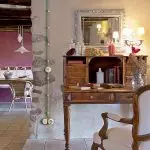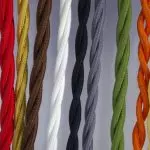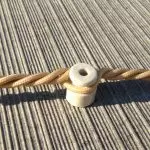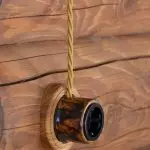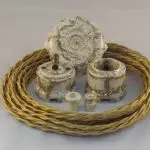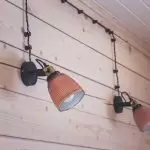In Soviet times, an open wiring was distributed. It was used everywhere. Outwardly, it looked like a twisted wire fixed with small insulators. The wires stretched under the ceiling, along the walls, along the jambs and the plinth.
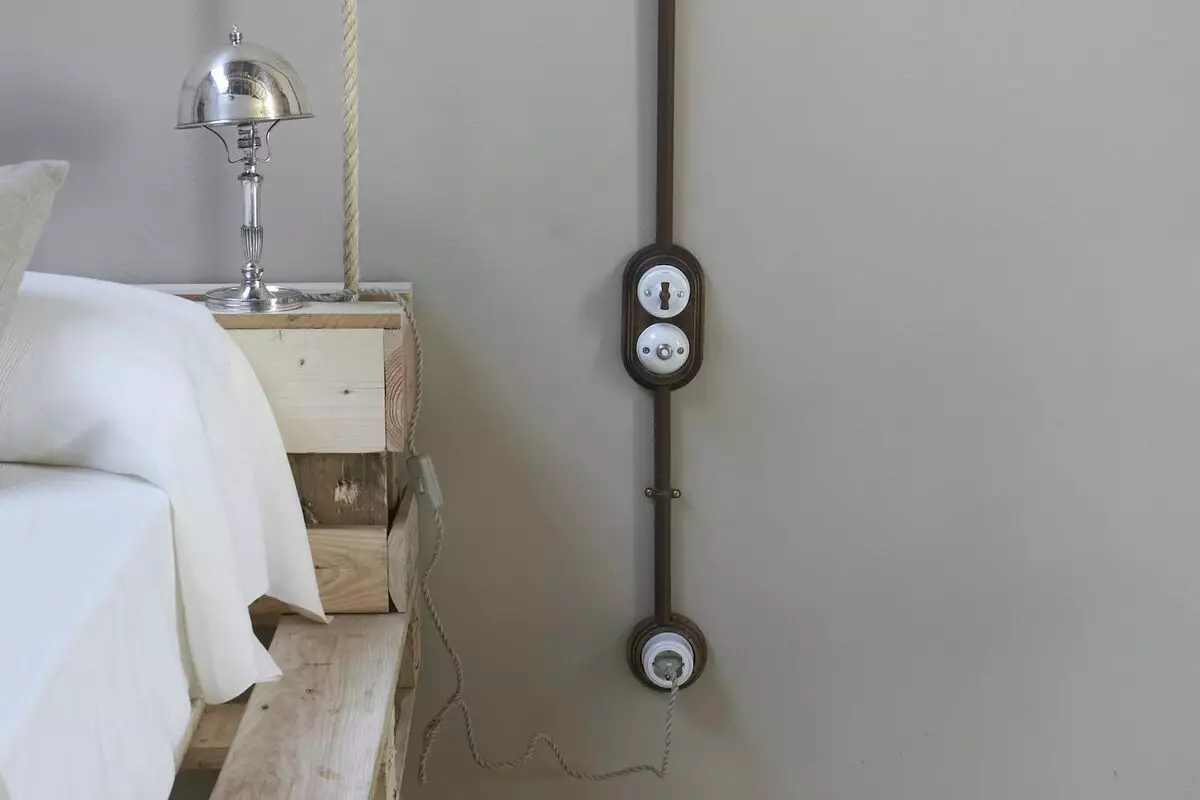
How to use in modern interior
In the 70s, the "Soviet wiring" became irrelevant. Hidden - hidden - hidden inside the wall. However, now, retiring is relevant again. It is used in several design directions:
- loft;
- chalet;
- vintage;
- Country
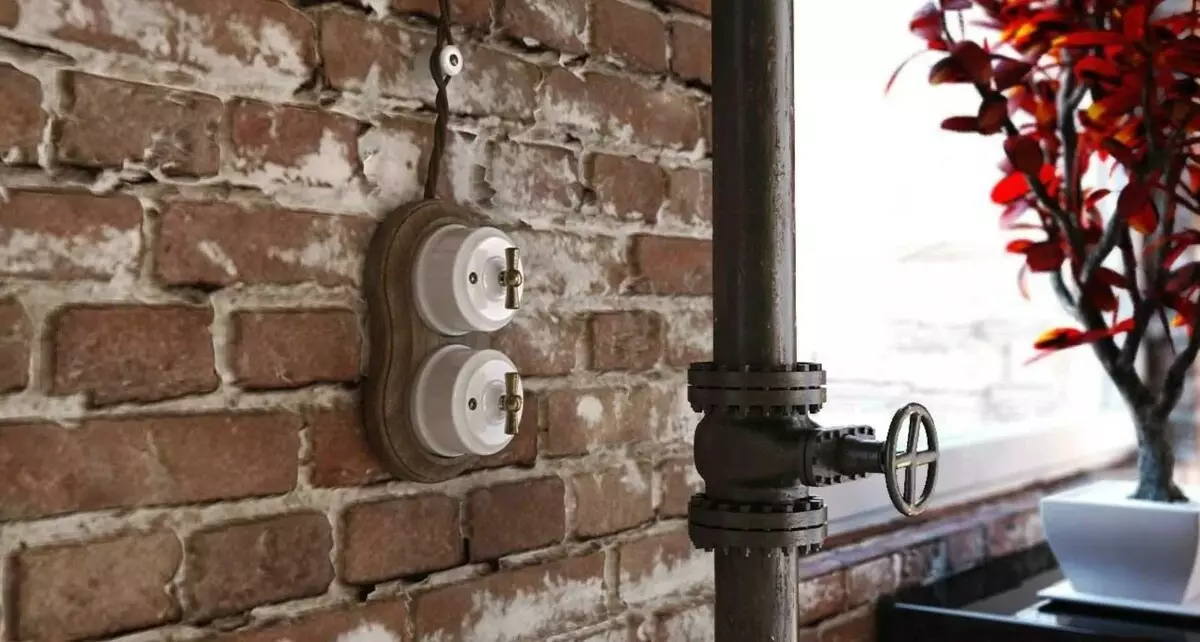
In addition to urban interiors, open wiring is relevant in private cottages from logs or timber. This is simultaneously a stylish and safe solution.
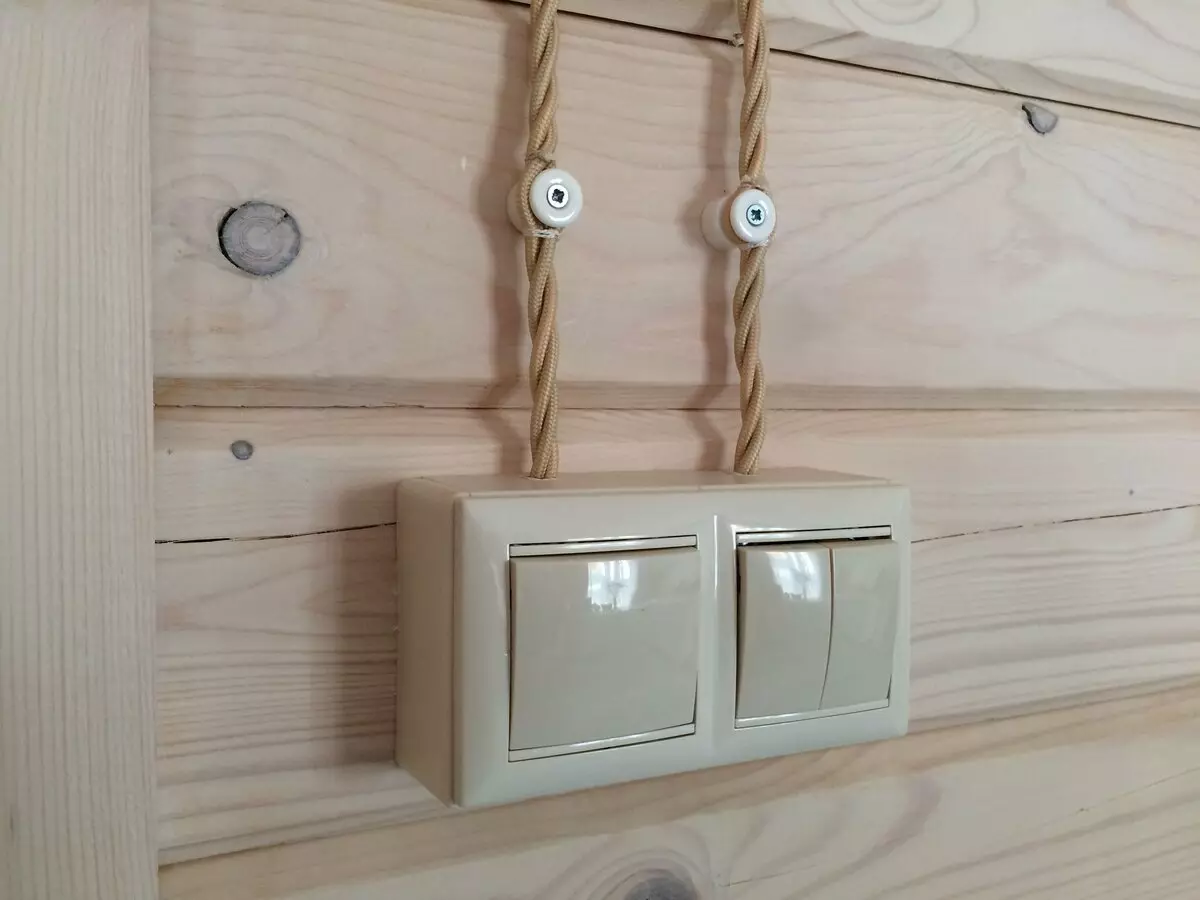
Advantages and disadvantages
Interior designers allocate the following advantages:
- Beautiful appearance, variety of colors;
- minimum time work costs;
- Compliance with safety, permanent access to all elements, simple service.
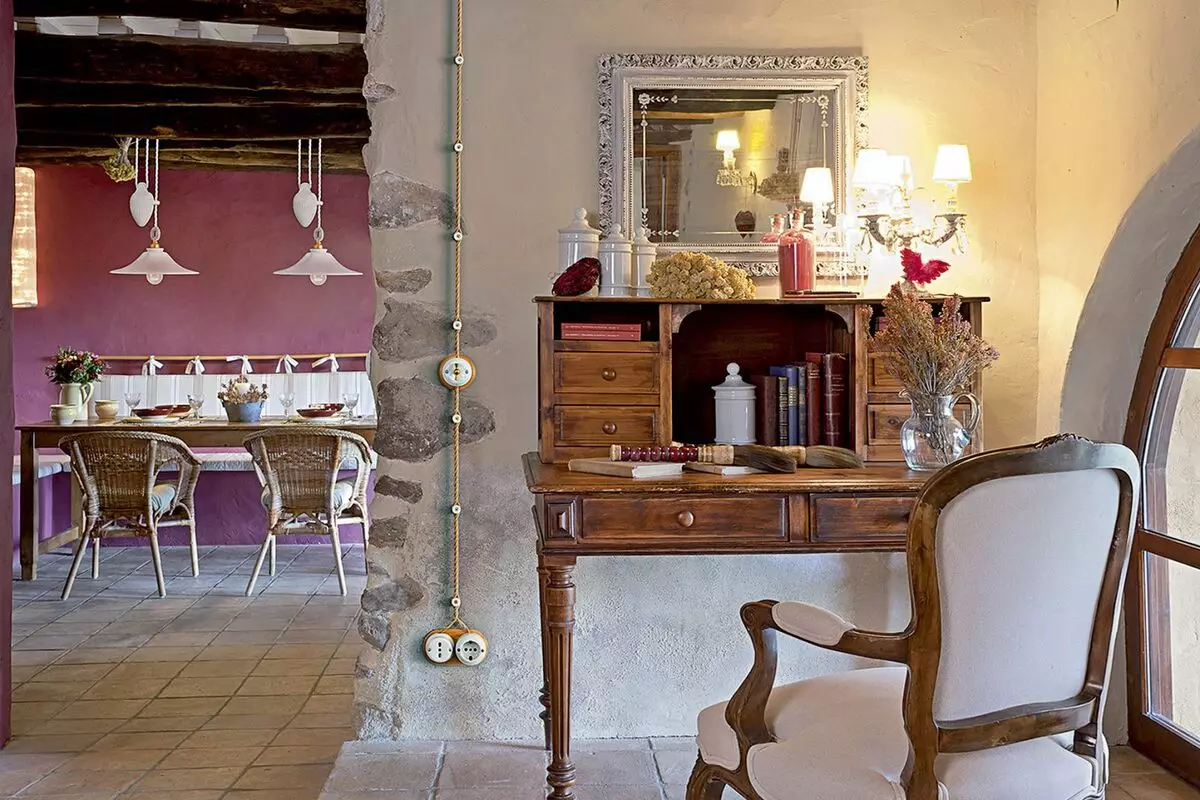
But, there are negative sides:
- high cost of components;
- Small power (wire diameter no more than 2.5 mm).
Materials for retiring
To create open wiring, you will need:
- wires;
- videos;
- Electropurture.
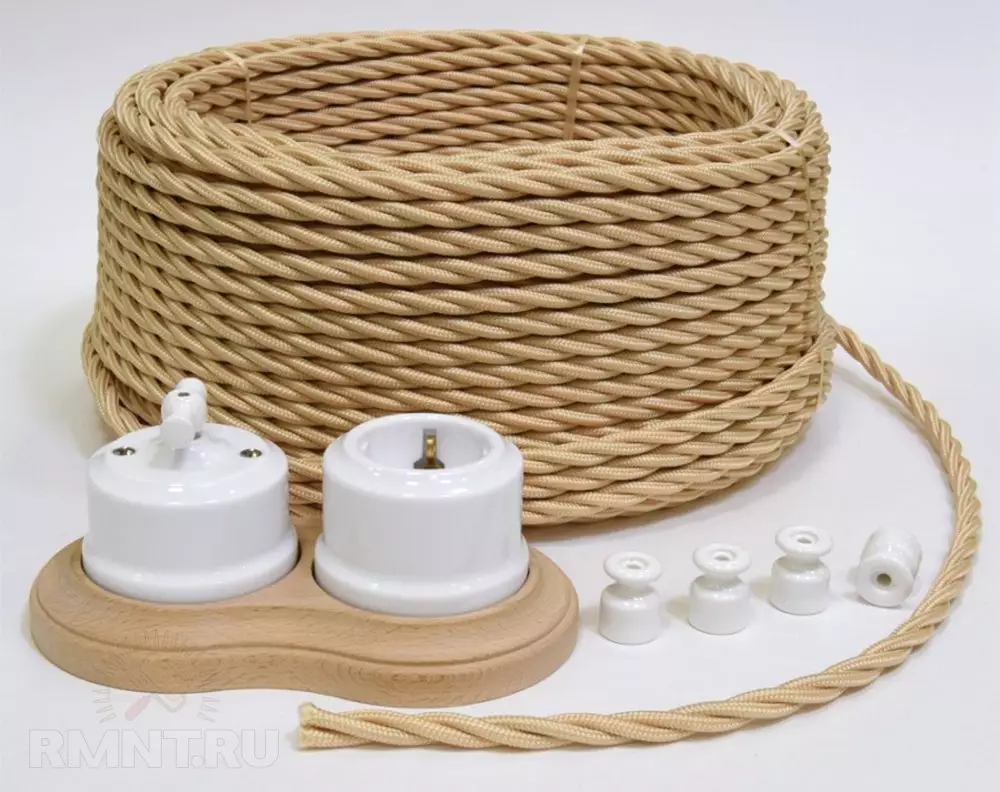
The copper wire must be in the textile shell - it is a highlight of such wiring. The wire itself can be a two-housing or three-core. The maximum diameter is 2.5 mm, which corresponds to the maximum power of 6 kW.
The outer shell happens from technical silk or cotton . It must be impregnated with refractory composition. Well-known Italian manufacturers: Gambarelli, Cordon Dor, Fontini Garby.
The color of the shell can be completely any - it is possible to choose the appropriate option for any interior.
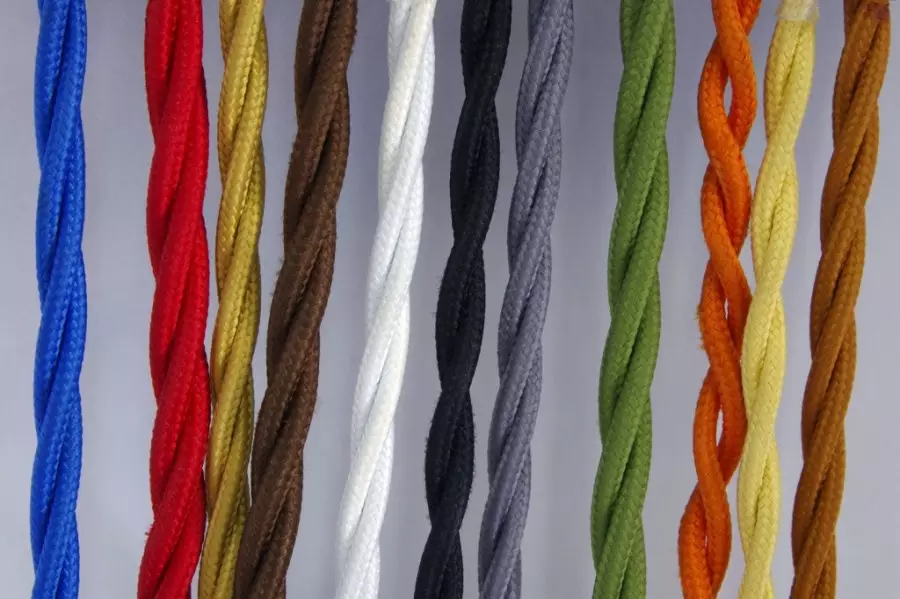
Rollers (look like stylish "barrels") perform the function of fixing the wire and separated it from the surface. As a rule, they are made of ceramics, porcelain or metal. Color can be any. There are even ceramic rollers with painting. There are also more budget components - from plastic.
Article on the topic: Things that can not be stored in children's
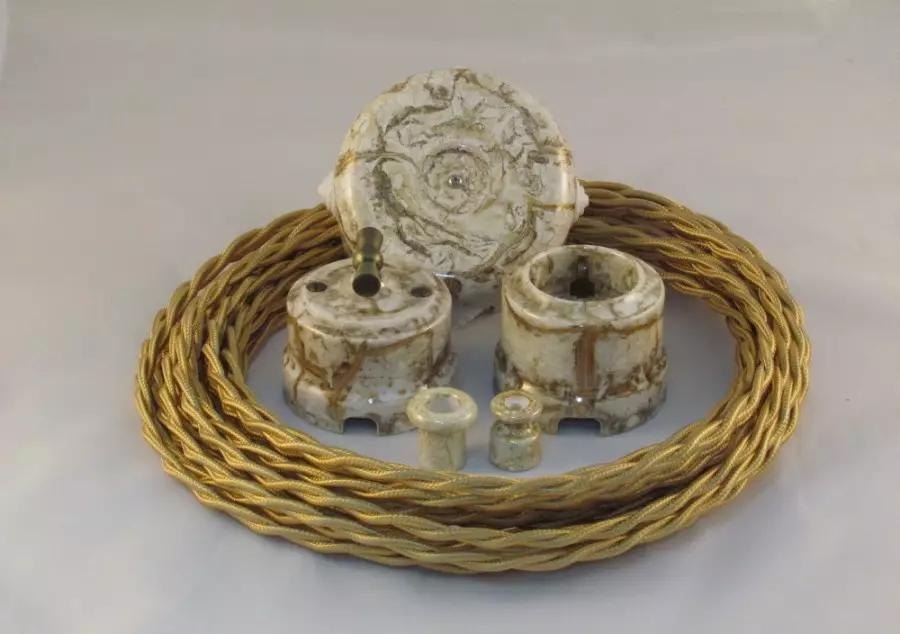
Tip! 10 M wires require about 20 rollers.
Retro style is unthinkable without suitable accessories. Switches, sockets, distribution boxes, lamps and lamps - everything must match the common color.
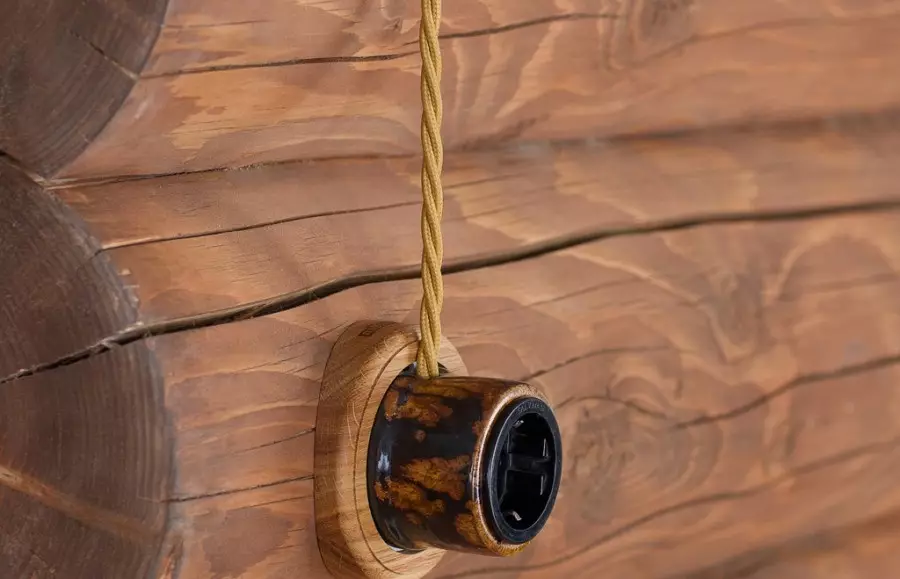
Basic Rules of Montaja
Working with wiring requires certain knowledge and skills. If possible, it is better that all work on installation performed a professional. But, general rules worth knowing everything:
- The distance from the rosette to the door or window should be more than 10 cm.
- The distance between the wire and the tube (with water or gas) is at least 50 cm.
- The optimal distance between the insulators: 7-8 cm.
- The distance between the extreme roller and the rosette or switch is 5 cm.
- Wires inside the distribution. Broces are fixed using soldering.
- Between the "barrels", the cable should be located directly, not to sag, but not be too tensioned.
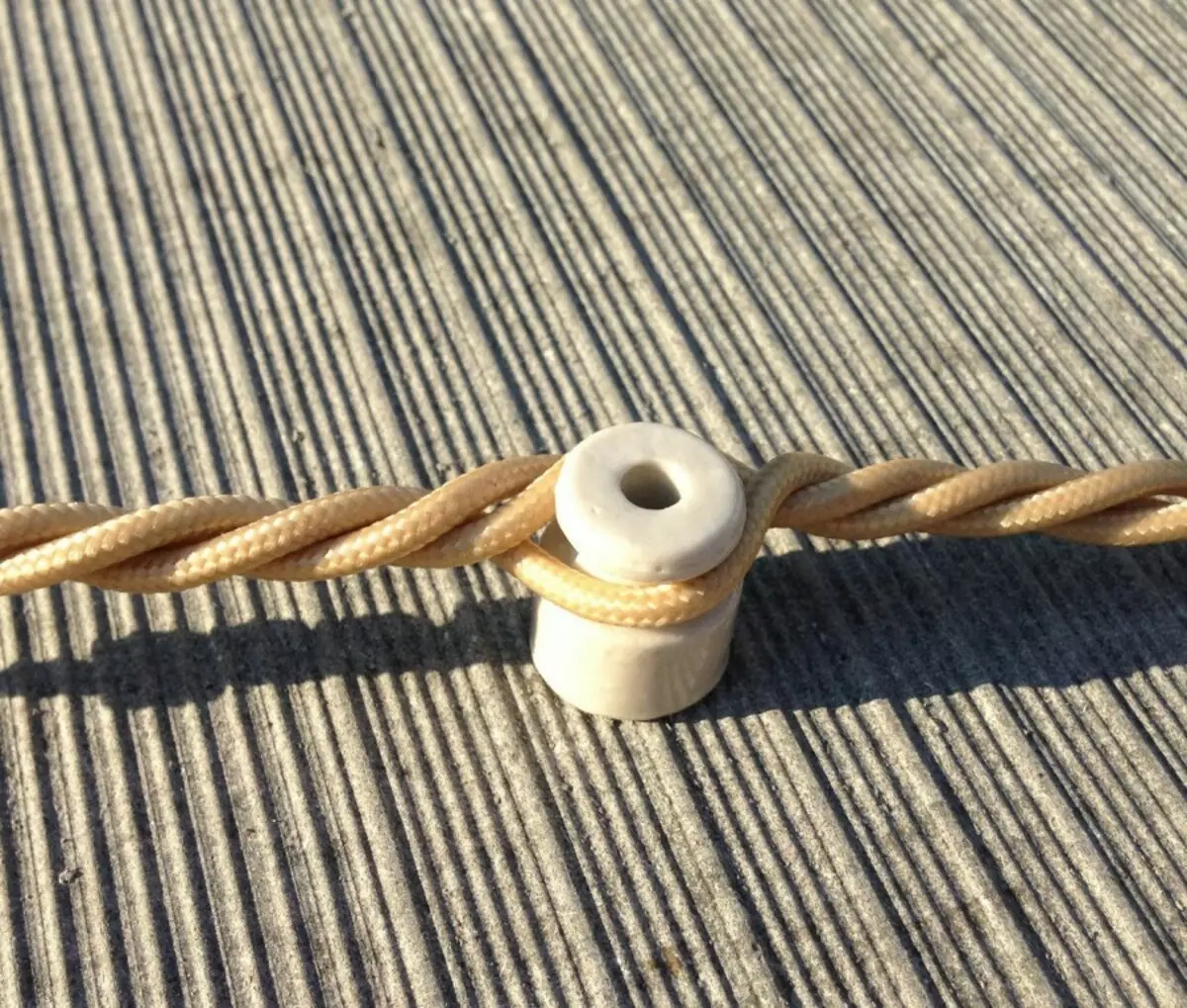
Conclusion
Retro style is especially appropriate in tree country houses. In such interiors, you want something comfortable, mental and simple. Open wires in combination with porcelain insulators perfectly complement the entourage in the style of "Country".
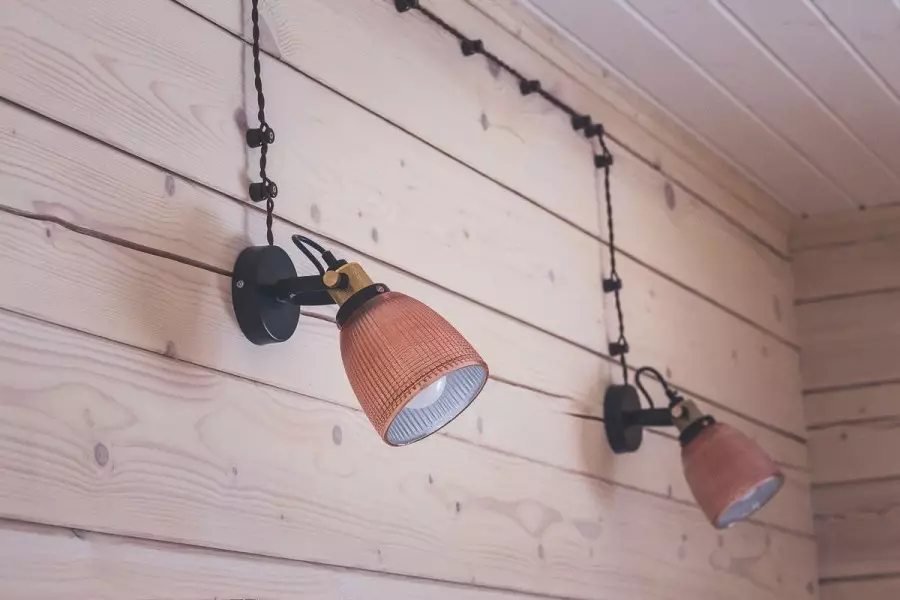
In the urban flat style Loft retircing is also relevant. It is well combined with brick masonry on the walls and old light bulbs without lampshar hanging from the ceiling.
With the help of the Wire, you can create a unique home atmosphere. It does not take much time and accessible to everyone.
Retro wiring in the apartment (1 video)
Retroproon in the interior (10 photos)
